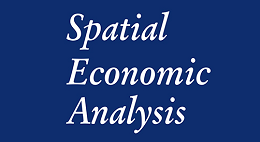rsea_a_1572914_sm0245.pdf (7.37 MB)
Resource effect in the Core–Periphery model
journal contribution
posted on 2019-03-19, 06:20 authored by María Pilar Martínez-García, José Rodolfo MoralesThis paper develops an extension of Krugman’s Core–Periphery (CP) model by considering a competitive primary sector that extracts a renewable natural resource. The dynamics of the resource give rise to a new dispersion force: the resource effect. If primary goods are not tradable, lower trade costs boost dispersion, and the agglomeration–dispersion transition is sudden or smooth depending on the productivity of the primary sector. Cyclic behaviours arise for high levels of productivity in resource extraction. If primary goods are tradable, in most cases, the symmetric equilibrium goes from stable to unstable as the openness of trade increases.


